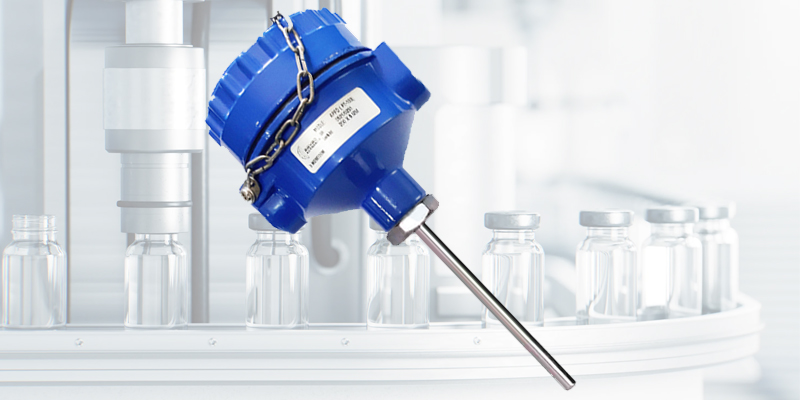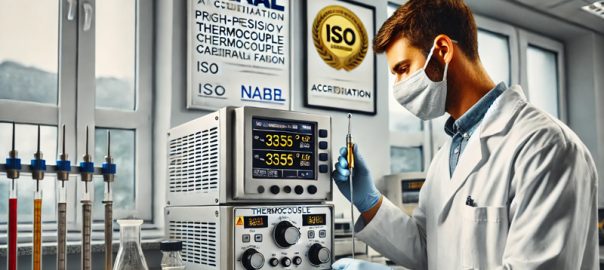
In the pharmaceutical industry, precise control and monitoring of reactions is crucial to ensure the production of high-quality drugs and pharmaceutical products. Glass reactors, combined with RTD (Resistance Temperature Detector) sensors, have become indispensable tools in pharmaceutical plants for their ability to provide accurate temperature measurement and control during various chemical processes. This blog post explores the advantages and applications of glass reactors and RTD sensors in pharmaceutical manufacturing.
Glass Reactors:
An Overview Glass reactors are cylindrical vessels with a glass body that allows operators to observe the reaction inside. The glass material offers excellent visibility, chemical resistance, and thermal stability, making it ideal for pharmaceutical applications. These reactors are available in various sizes and configurations, including single-walled or jacketed designs.
Importance of Temperature Control:
Temperature control is critical in pharmaceutical reactions as it directly influences reaction rates, selectivity, and product quality. Glass reactors are equipped with precise temperature control systems that maintain a consistent and accurate operating temperature. This control ensures reproducibility and optimizes reaction conditions for efficient pharmaceutical manufacturing.
RTD Sensors:
Reliable Temperature Measurement RTD sensors are widely used in the pharmaceutical industry for their high accuracy, stability, and durability. RTDs measure temperature by detecting the change in electrical resistance of a platinum element as the temperature changes. These sensors offer several advantages over other temperature measurement methods, including high precision, fast response times, and resistance to chemical corrosion.
Integration of Glass Reactors and RTD Sensors:
Glass reactors are often fitted with RTD sensors at strategic locations to monitor and control the temperature during a reaction. The sensors provide real-time temperature data, which can be used to adjust heating or cooling systems to maintain the desired reaction conditions. The data collected by RTD sensors is invaluable for process optimization, quality assurance, and regulatory compliance.
Applications in Pharmaceutical Manufacturing Glass reactors with RTD sensors find diverse applications in pharmaceutical manufacturing, including:
- Chemical synthesis: Glass reactors facilitate controlled reactions for the synthesis of active pharmaceutical ingredients (APIs) and intermediates.
- Crystallization: Precise temperature control in glass reactors promotes the formation of uniform and high-quality crystals.
- Distillation: Glass reactors equipped with RTD sensors enable efficient distillation processes for solvent recovery and purification.
- Reaction optimization: Real-time temperature monitoring allows for rapid process optimization and identification of potential issues.
Advantages and Benefits The combination of glass reactors and RTD sensors offers several advantages to pharmaceutical plants, such as:
- Improved product quality: Accurate temperature control leads to consistent product quality and reduced batch-to-batch variability.
- Enhanced safety: Real-time temperature monitoring helps prevent overheating or overcooling, minimizing the risk of accidents and ensuring operator safety.
- Regulatory compliance: Precise temperature control and monitoring aid in meeting regulatory requirements and documentation standards.
- Cost efficiency: Optimized reaction conditions result in higher yields, reduced energy consumption, and overall cost savings.
Selection of Glass Reactors:
- Considerations such as reaction scale, temperature range, pressure requirements, and compatibility with chemicals should be taken into account when choosing a glass reactor.
- Jacketed glass reactors offer the advantage of providing a double-walled construction that allows for efficient heat transfer through the circulation of a heating or cooling medium.
- Single-walled glass reactors are suitable for lower temperature and pressure applications, where insulation or precise temperature control is not critical.
Integration with Control Systems:
- Glass reactors and RTD sensors can be integrated into sophisticated control systems, such as distributed control systems (DCS) or programmable logic controllers (PLC), for automated operation and precise temperature regulation.
- These control systems can be programmed to adjust temperature setpoints, ramp rates, and control parameters based on the specific process requirements, ensuring optimal reaction conditions.
Data Logging and Analysis:
- The temperature data collected by RTD sensors can be logged and analyzed to gain insights into the reaction kinetics, thermal profiles, and process optimization.
- Advanced data acquisition and analysis software can help identify patterns, anomalies, and correlations between temperature variations and process parameters, leading to improved process understanding and efficiency.
Scale-Up Considerations:
- Glass reactors are often used in the early stages of process development and scale-up studies.
- The data collected from glass reactor experiments, along with temperature measurements from RTD sensors, can aid in scaling up the process to larger reactors or other equipment, ensuring a smooth transition and maintaining process consistency.
Safety Measures:
- Glass reactors should be equipped with safety features such as pressure relief valves, rupture discs, and temperature cutoffs to prevent overpressure or overheating.
- Proper training and adherence to standard operating procedures (SOPs) are crucial to ensuring safe operation and handling of glass reactors in pharmaceutical plants.
Future Developments:
- Ongoing research and development in the field of glass reactors and RTD sensors aim to further improve their performance and functionality.
- Advancements in sensor technology, such as wireless and multipoint temperature sensing, may offer enhanced monitoring capabilities and enable more complex reaction control strategies.
Cleaning and Sterilization:
- Glass reactors in pharmaceutical plants require thorough cleaning and sterilization between different batches or when switching to different processes.
- The glass material is advantageous in this regard as it is easy to clean, non-reactive, and can withstand high-temperature sterilization methods such as autoclaving.
Reactor Design and Configuration:
- Glass reactors come in various designs and configurations to accommodate different types of reactions and process requirements.
- Some reactors may have additional features such as reflux condensers, agitators, or baffles to optimize mixing, heat transfer, and reaction kinetics.
Use in Process Development:
- Glass reactors and RTD sensors play a crucial role in process development and optimization in the pharmaceutical industry.
- They enable researchers and engineers to study reaction kinetics, identify the optimal temperature range, and determine the parameters for scaling up to larger production reactors.
Quality Control and Validation:
- Glass reactors and RTD sensors support quality control and validation processes in pharmaceutical manufacturing.
- By maintaining precise temperature control and monitoring, they contribute to ensuring the consistency, reproducibility, and integrity of the manufactured products.
Safety and Hazardous Reactions:
- Glass reactors and RTD sensors are particularly useful when handling hazardous or reactive substances in pharmaceutical processes.
- Real-time temperature monitoring helps prevent runaway reactions or dangerous thermal events, ensuring the safety of the operators and the facility.
Collaboration with Analytical Techniques:
- Glass reactors can be coupled with various analytical techniques such as spectroscopy, chromatography, or mass spectrometry.
- This integration allows for in-situ or real-time analysis of reaction intermediates, by-products, or impurities, providing valuable insights for process optimization and control.
Future Trends:
- The integration of automation, artificial intelligence, and machine learning technologies with glass reactors and RTD sensors holds the potential to revolutionize pharmaceutical manufacturing.
- Predictive modeling and advanced control algorithms can further enhance process efficiency, yield, and product quality.
Case Studies and Success Stories:
- Including real-life case studies or success stories where glass reactors and RTD sensors have been successfully implemented in pharmaceutical plants can provide practical examples and further validate their benefits.
Glass reactors integrated with RTD sensors are indispensable tools for pharmaceutical plants, providing precise temperature control and monitoring during various chemical processes. Their ability to ensure optimal reaction conditions, enhance product quality, and improve overall process efficiency makes them an integral part of pharmaceutical manufacturing. By leveraging the benefits of glass reactors and RTD sensors, pharmaceutical plants can elevate their production capabilities and meet the stringent demands of the industry.












